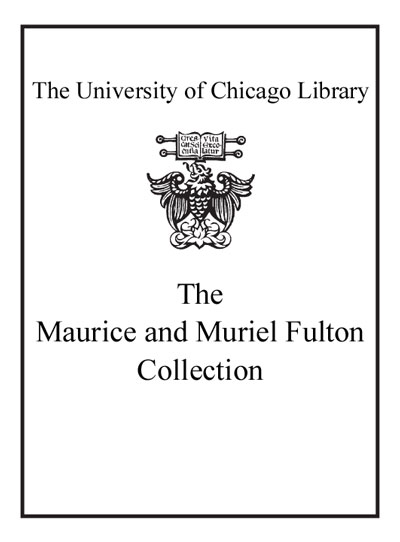Review by Choice Review
A masterful analysis of the need for an ecological worldview (global ecology) to wrest the world from its destructive trajectory. Goldsmith presents his analysis logically and rationally, unifying it under the almost universal concept known by native societies as "The Way." He believes that the way for ecological survival must come from an acknowledgement of the validity of lifeways held by vernacular societies. Goldsmith builds his case through a series of 66 brief essays (chapters) that define, rationalize, and sequentially construct his argument. Under attack are the reductionistic and mechanical views of modernism as well as concepts such as progress, change, economic development, and specialization. Instead, Goldsmith argues, there must be "homeotely," a term he coins from the Greek homeo (same) and telos (goal), a human-earth relationship focused on Gaia and respectful ecological relationships, originally the hallmark of human lifeways, and still in vernacular societies. Clearly, this treatise is a quiet, unassuming, logical yet passionate expos'e of what is wrong, why, and how it can be remedied. The argument attacks the compartmentalization of modern academic disciplines, but applauds the wisdom of native societies. Highly readable, though logically sophisticated. For all libraries. Advanced undergraduate through professional. M. Evans; SUNY Empire State College
Copyright American Library Association, used with permission.
Review by Booklist Review
Life is a leap of faith; science, a judgment call; neither science nor journalism can be trusted as a source of "objectivity." Such perceptions are overwhelming and inescapable reactions to these studies of the practice, manipulation, and consequences of science. What the Bones Tell Us author Schwartz has championed--in The Red Ape (1987)--the notion that humankind's closest relative is the orangutan, not the chimpanzee or gorilla. Here he outlines the nature and limits of osteology and paleontology and the scientific knowledge the two sciences provide. Part one describes the kinds of fossils and artifacts archaeologists find, and the analyses used to generate hypotheses from such incomplete data; analogies to forensics and tales of Schwartz's personal involvement in specific digs demonstrate the high error potential of the process. Part two reassesses the places of Darwin, Huxley, and Raymond Dart in human evolutionary theory, then discusses the history of interpretations of Neandertal (the author's preferred spelling) fossils and tools over the past century and a half. Schwartz's "Final Reflections" returns to the human-ape connection to reinforce the need to be "critical of how I or anyone else proceeds methodologically and . . . of the consequences . . . of the selection of one particular theory from among all of the alternatives."Trinkaus and Shipman describe the debates and disagreements that have refined scientists' understanding of the Neandertals over the years, emphasizing identity, kinship, and nature. Kinship and nature in particular have often generated alternative hypotheses based more on "the interpreter's assumptions, preconceptions, and goals" than on differences in the raw data. Trinkaus is a significant player in The Neandertals' controversies, since he was one of the first Western scientists to study the Krapina Neandertals. His early-1980s suggestion that Neandertal mothers may have had a 12-month gestation period was later disproved, but his effort to focus analysis on Neandertals' behavior (rather than simply on their relationship to modern humans) seems to have been productive. Ultimately, "Neandertals were the mirrorlike fossils to which everyone looked for evidence of human nature . . . [but] the answer has rarely stayed the same for more than ten years at a time." If the characteristics of Neandertals are at the center of one of the great controversies animating study of the past, the role of humankind on the planet and the consequences of science itself are clearly central issues in looking toward the future. With respect to such issues, it is difficult to imagine two writers whose "assumptions, preconceptions, and goals" are more different than those of Michael Fumento and Edward Goldsmith.Science under Siege is a muckraking critique of the public debate on nearly a dozen "environmental threats"--among them, Alar, dioxin, Agent Orange, food irradiation, electromagnetic fields, and video display terminals--as a basis for analyzing relative risks and allocating scarce public resources. Fumento, a reporter for Investor's Business Daily and author of The Myth of Heterosexual AIDS [BKL D 15 89], challenges the accuracy and scientific basis for many of the alarm bells sounded by environmental activists and advocacy groups. He denounces the roles bureaucrats, politicians, the media, businesspeople, and scientists themselves play in accepting and popularizing notions of ecological cause and effect for which there is no solid scientific evidence, and insists that too many environmental leaders are alien folk: romantic, agrarian, and elitist Luddites for whom nature is a religion. "It is time," Fumento declares, "to begin shaping policies on the basis of science, rather than shaping science to fit policies."Goldsmith, former editor of the Ecologist, could hardly disagree more. Science and technology, he argues, are responsible for the planetary mess whose existence (or whose seriousness) Fumento denies.
From Booklist, Copyright (c) American Library Association. Used with permission.
Review by Choice Review
Review by Booklist Review

